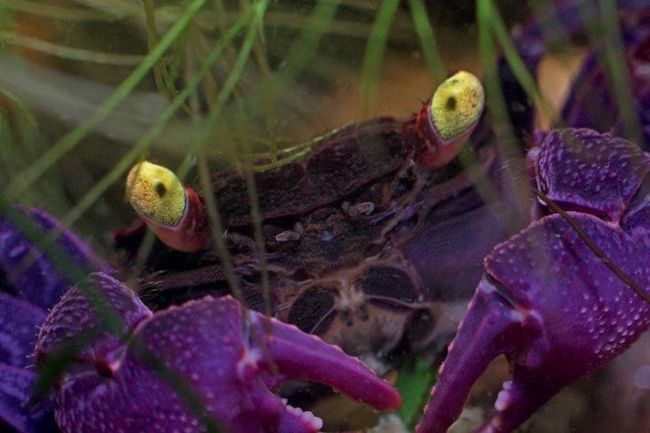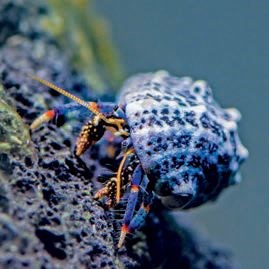A BEGINNER’S GUIDE TO CRABS
While they’re not to everyone’s taste, crabs are an increasing aquatic phenomenon. Jack Flanagan looks at the basics of crab care at home.

HUTTERSTOCK
JACK FLANAGAN
Jack is a London based freelance journalist with a background of studying biology and animal behaviour.
CRABS ARE almost certainly not the reason most people get into aquaria. They are nocturnal - whereas most people are not - and they’re aggressive, making them a poor community choice. Some have unusual diets or, at the very least, tastes more diffi cult to source than with a few fi sh fl akes.
Nevertheless, being relatively unusual makes them exotic and interesting challenges for the hobbyist. Crabs are curious, comical pets - the Fiddler crab waving his arm, or the Vampire crab frantically collecting food as it falls to the substrate.
What are crabs?
Crabs are invertebrates, as well as crustaceans: a very large group of organisms, which include other common aquarium species like shrimp and lobsters.
Crabs are particularly versatile and live all around the world, although the bulk of our exotic aquarium species are brought from either the Indo-Pacifi c or the coasts and rivers of the Americas.
Species tend to cluster around reefs, intertidal zones like estuaries and mangroves, where they thrive as scavengers and opportunists.

Yellow eyed vampire crab.
SHUTTERSTOCK

Hermit crab.
They are, you’ll be pleased to hear, not too onerous to care for. Crabs are scavengers, and so will effectively pick up whatever other animals leave. They are tolerant of a range of conditions, and in turn that makes them forgiving for the occasionally clumsy aquarium keeper.
Crabs run the gamut between fresh, marine and brackish water. While they tend to be tolerant of small, short-term deviations from their normal salinity, attention must be paid for their long-term health. Freshwater species tend to live in lower parts of rivers or lakes, where the current is slower, so that they can feed on detritus that settles. Morphologically, they are much the same as their marine cousins, except typically larger.